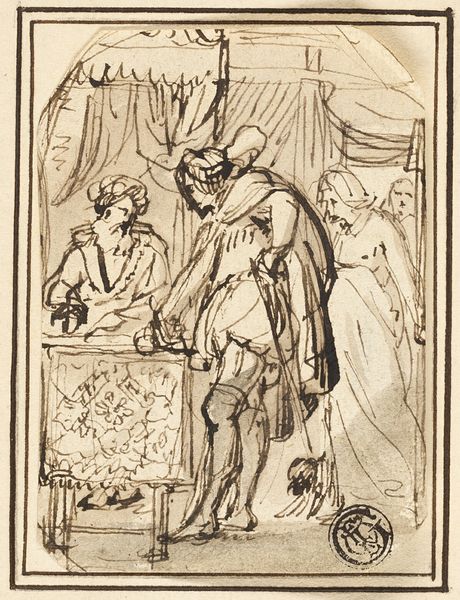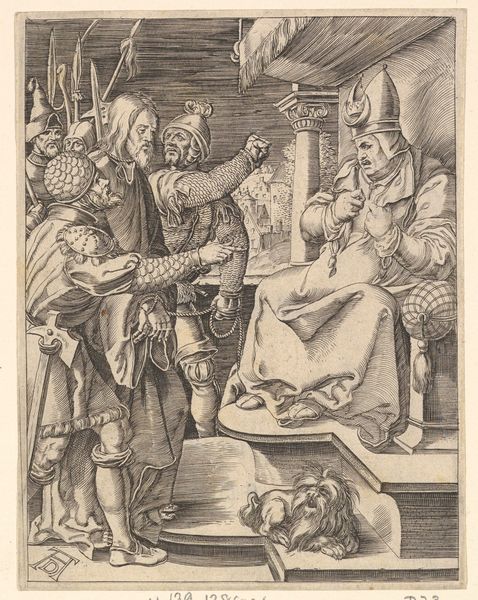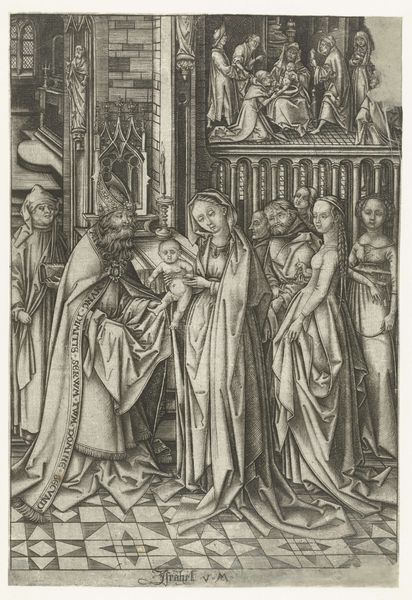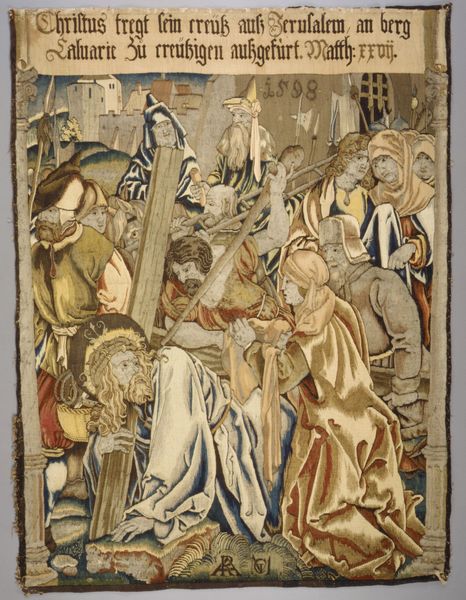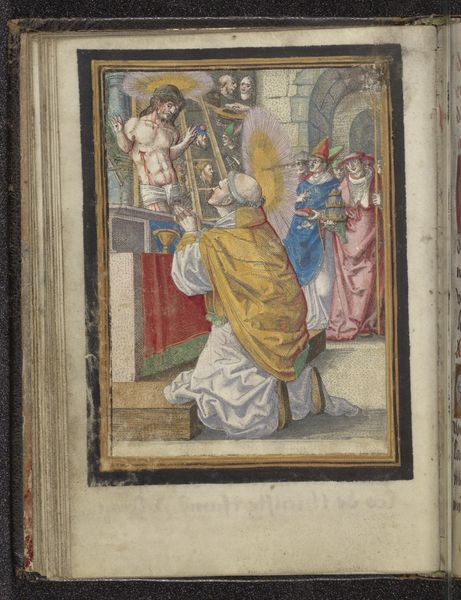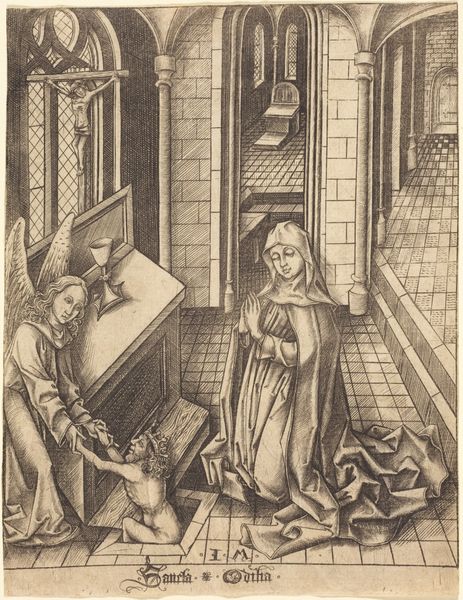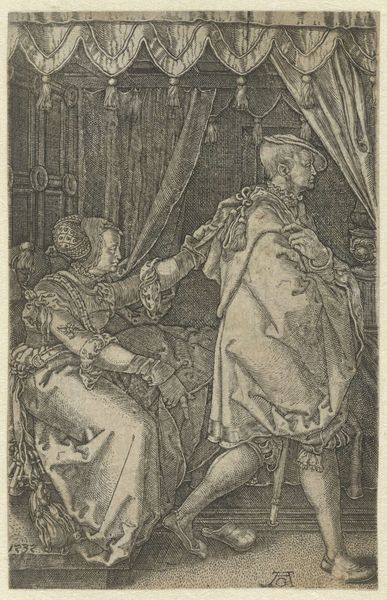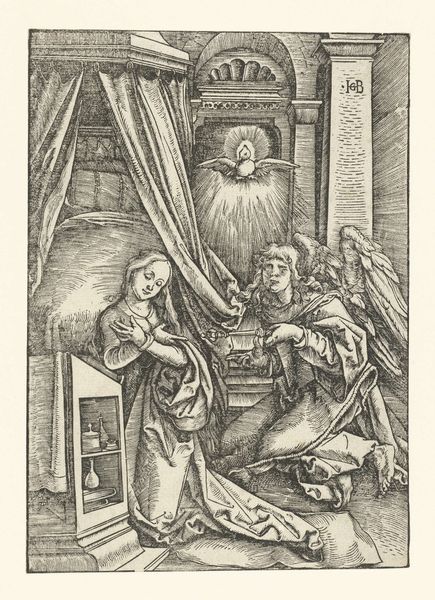
drawing, watercolor, ink
#
drawing
#
charcoal drawing
#
oil painting
#
watercolor
#
ink
#
romanticism
#
watercolour illustration
#
history-painting
#
watercolor
Copyright: Public domain
Editor: Here we have Henry Fuseli's "The Debutante," created around 1807, using ink and watercolor. It’s really striking; the rigid formality feels like a critique. What historical elements should viewers consider when approaching this work? Curator: Fuseli was deeply engaged with the socio-political undercurrents of his time. The rigid formality you mention points to the restrictive social codes placed upon women, especially debutantes entering society. Think of it as a visual commentary on the performative aspects of aristocratic life during the late Georgian era and how such spaces influence a young lady. Editor: So, it’s not just a portrait of young women, but a commentary on their limited roles? How does the composition support that reading? Curator: Exactly. The composition is claustrophobic. See how the figures are pressed together within confined spaces, almost like stage sets? The harsh, contrasting lighting dramatizes the psychological weight of societal expectations. Note, for instance, how the figure in full shadow stares through the others. To further my point, ask yourself who do you think benefits from enforcing the expectations. Editor: Interesting. I initially just saw it as a period piece, but the restrictive setting and those gazes create a sense of unease and entrapment. It’s a powerful way to visualize those unspoken pressures. I never really thought about paintings being used for social commentaries. Curator: And this piece demonstrates how artwork can expose the intricate power dynamics in play within societies, leaving much more to discover!
Comments
No comments
Be the first to comment and join the conversation on the ultimate creative platform.

